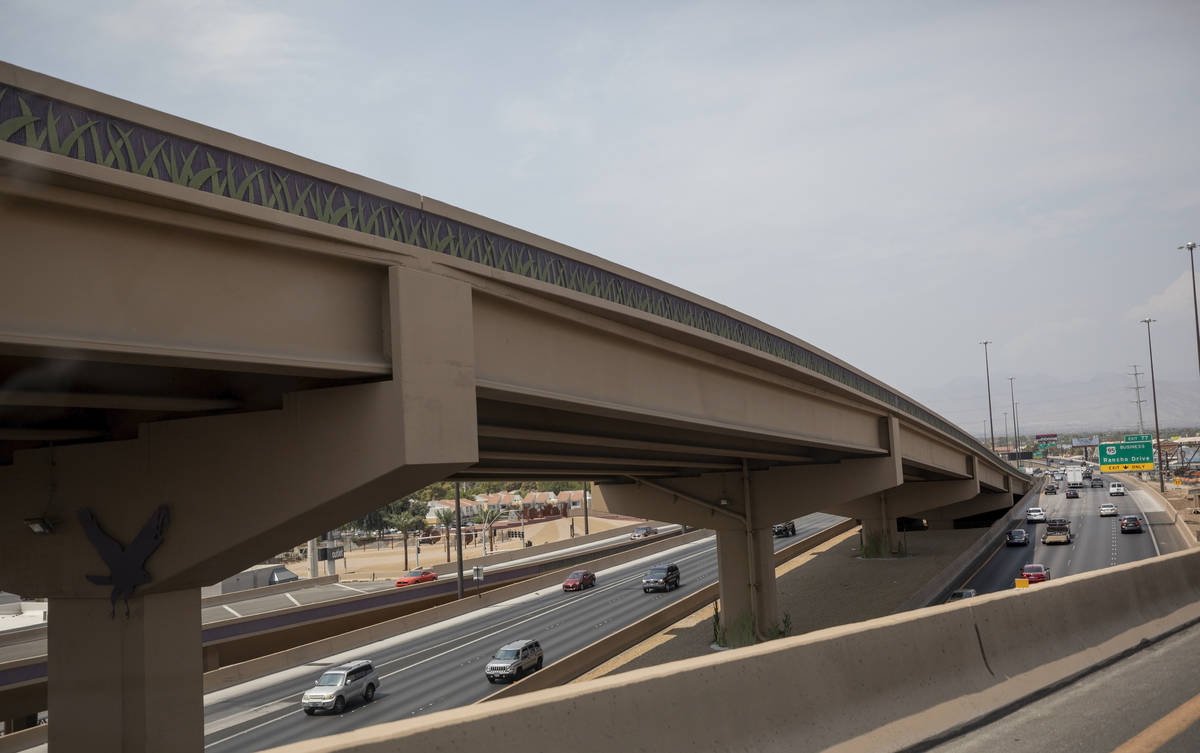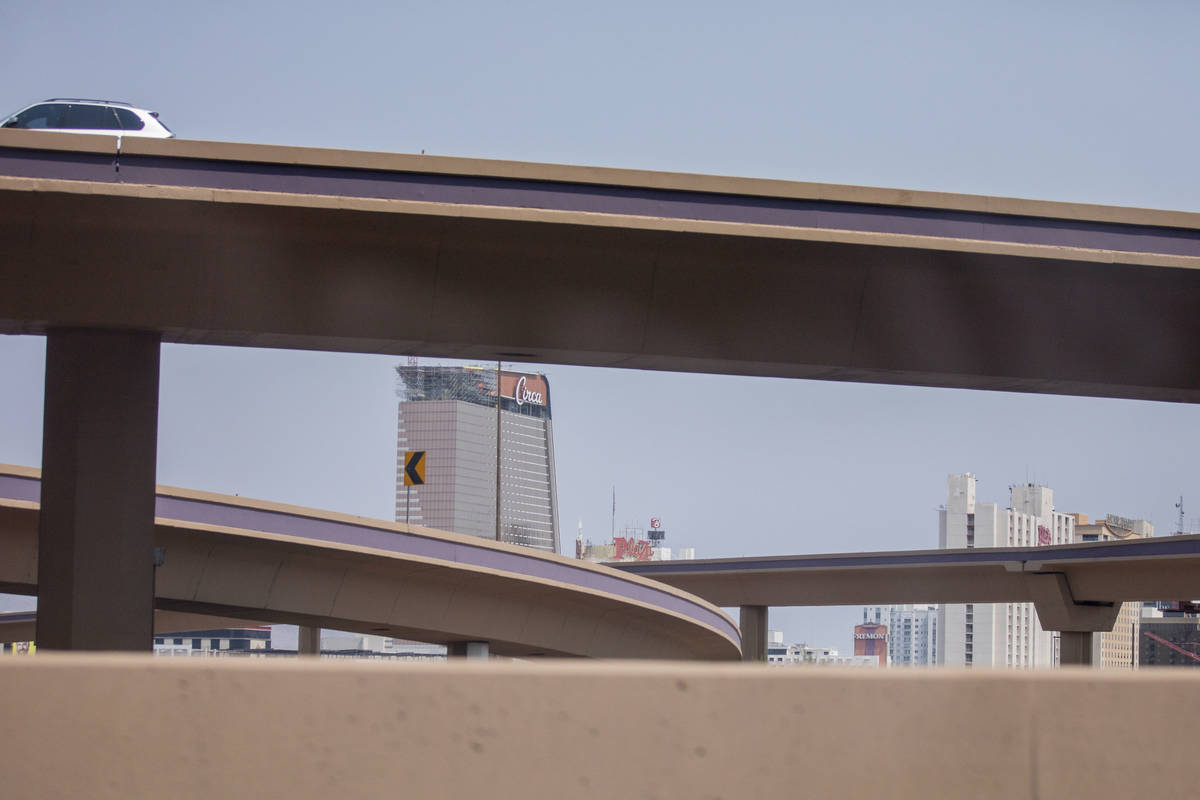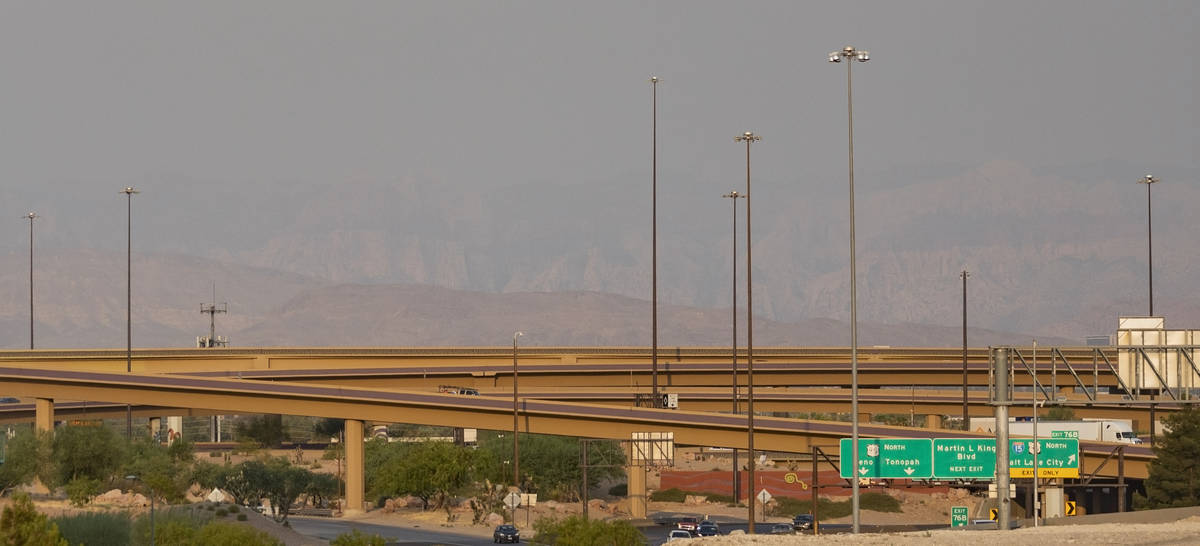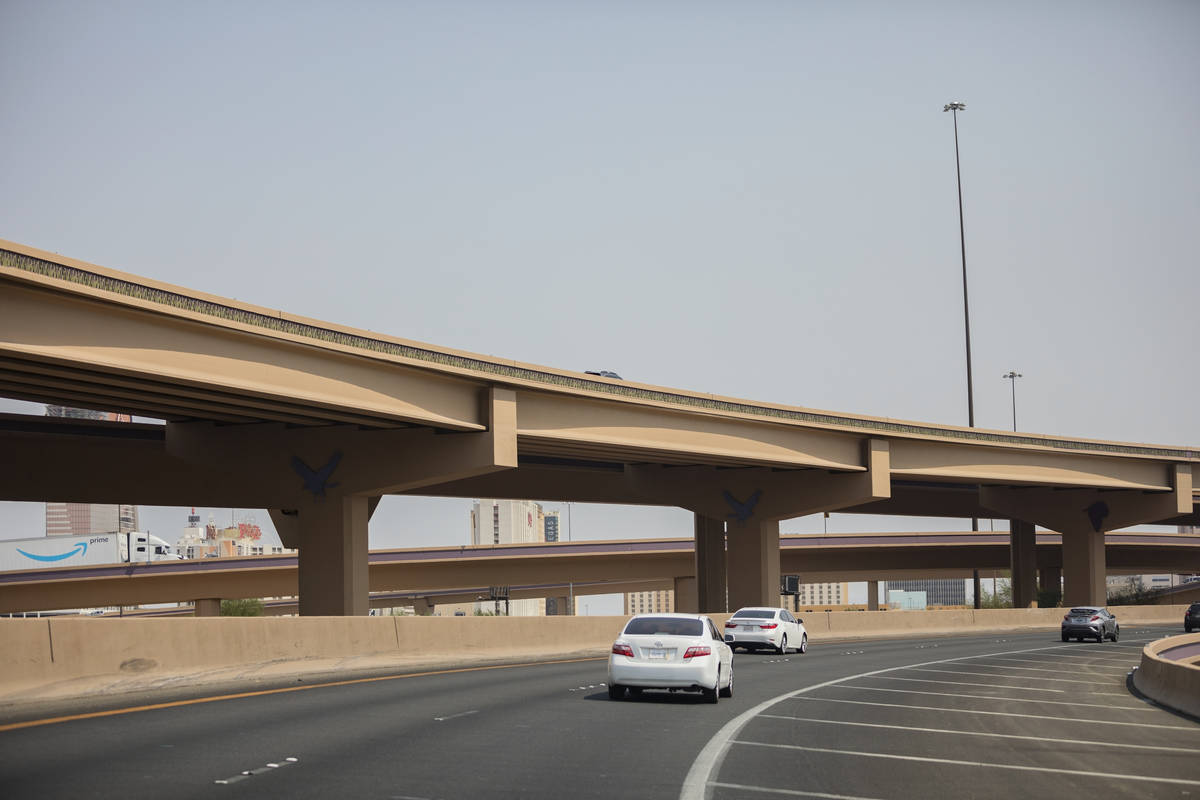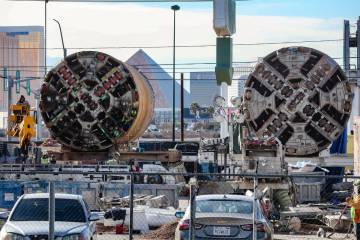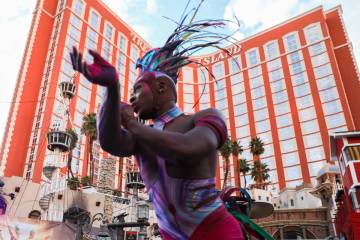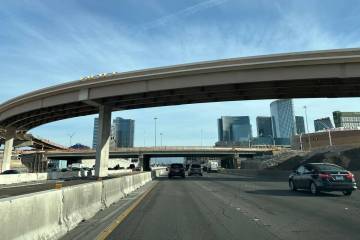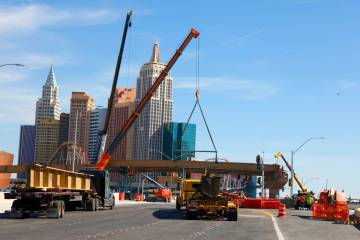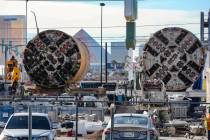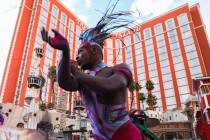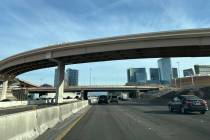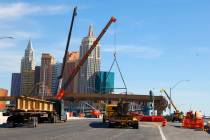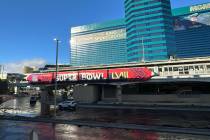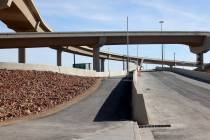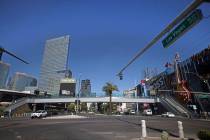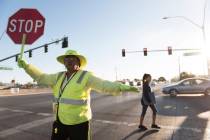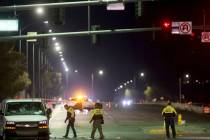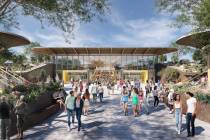Plans advance for major US 95 road project in downtown Las Vegas
A year after the nearly $1 billion Project Neon wrapped up, transportation planners are in the early stages of developing the next 10-figure road project.
The Nevada Department of Transportation is launching a Downtown Access Project website Monday, providing information about a project to improve U.S. Highway 95 between Rancho Drive and Mojave Road.
The project is intended to alleviate traffic by replacing or removing the 1.6-mile-long viaduct, or elevated road, running from Martin Luther King to just east of Las Vegas Boulevard, and correcting on- and offramps that were constructed too close together.
NDOT plans show braided ramps between Interstate 15 and U.S. 95 with the construction of new HOV interchanges at City and Maryland parkways. Those would be similar to the Neon Gateway on I-15, with the on- and offramps being on the far left side.
The project is slated to be the first update to the U.S. 95 viaduct in approximately 50 years.
Depending on what design option is picked, a major component of the Downtown Access Project involves the bridge between Eighth Street and the Union Pacific railroad tracks, just west of Main Street, which could be demolished or replaced.
A second bridge running from Eighth Street to Bruce Street that was constructed in 1980 would also be replaced.
To improve traffic flow while the preferred project type is chosen, a cluster of interim projects is planned. Those include rehabilitating the existing viaducts downtown and adding auxiliary lanes to U.S. 95 ahead of the Downtown Access Project. One auxiliary lane would run southbound from I-15 to Eastern Avenue and one would run on each side of U.S. 95 between Charleston Boulevard and Eastern.
Those improvements are slated to be made between 2021 and 2023.
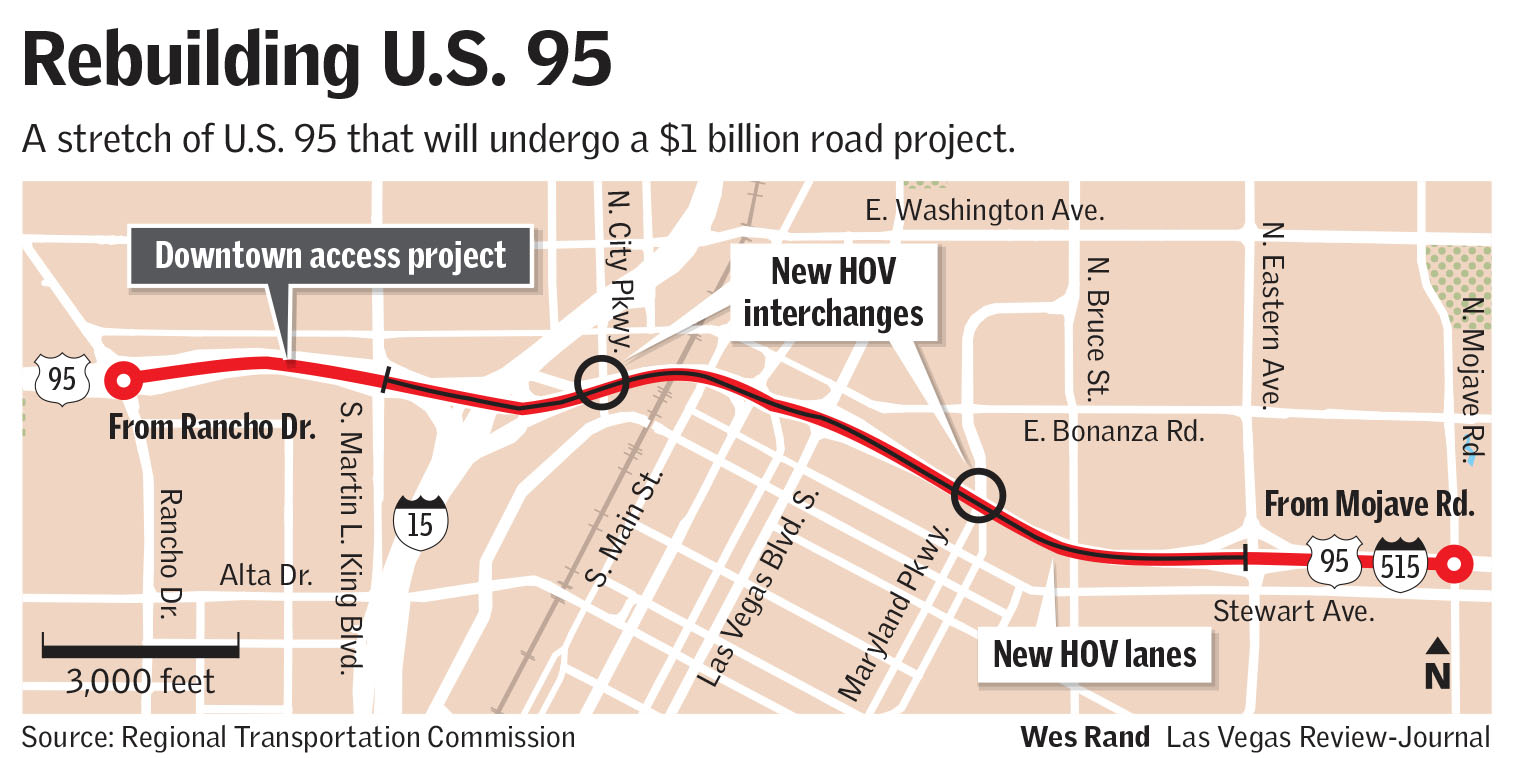
There are four possibilities for the Downtown Access Project listed on NDOT’s website, each with varying project scopes.
Option 1: Existing bridges would be demolished and the freeway would run below grade with major cross streets and pedestrian crossings going over the freeway.
Option 2 (Southern): Existing bridges would be demolished and the freeway would be rebuilt at a similar height as the current setup, but it would be widened to allow for increased capacity. The possible southern alignment would go through downtown, adjusting the freeway slightly to the south of its current location.
Option 3 (Northern): Existing bridges would be demolished and the freeway would be rebuilt at a similar height but would be widened. The proposed northern alignment would go through downtown, adjusting the freeway slightly to the north of its current location. The freeway alignment east of Las Vegas Boulevard is essentially the same as the southern alternative.
Option 4: Nothing would be done outside of the interim improvements.
Over the years, the stretch of freeway has seen a high frequency of crashes, with an average of 1.83 crashes per million vehicle miles traveled. That’s above the state average of 1.55 crashes per million vehicle miles.
In the project area, there were 272 crashes in 2015, increasing to 324 in 2016 and 460 in 2017.
The project is tentatively scheduled to be in the environmental testing stage until 2023, with right-of-way acquisition and final design coming by 2027.
Construction is planned to begin in 2027 and be completed in 2031, according to the project’s website. The project timeline is dependent on NDOT obtaining the needed funding in a timely manner.
Send questions and comments to roadwarrior@reviewjournal.com. Please include your phone number. Contact Mick Akers at makers@reviewjournal.com or 702-387-2920. Follow @mickakers on Twitter.
Give your input
The Nevada Department of Transportation invites public participation in a virtual information meeting for the proposed Downtown Access Project in Las Vegas. The online meeting will be active and live 24/7 for 30 days from Monday through Sept. 22. Go to ndotdap.com to participate.



